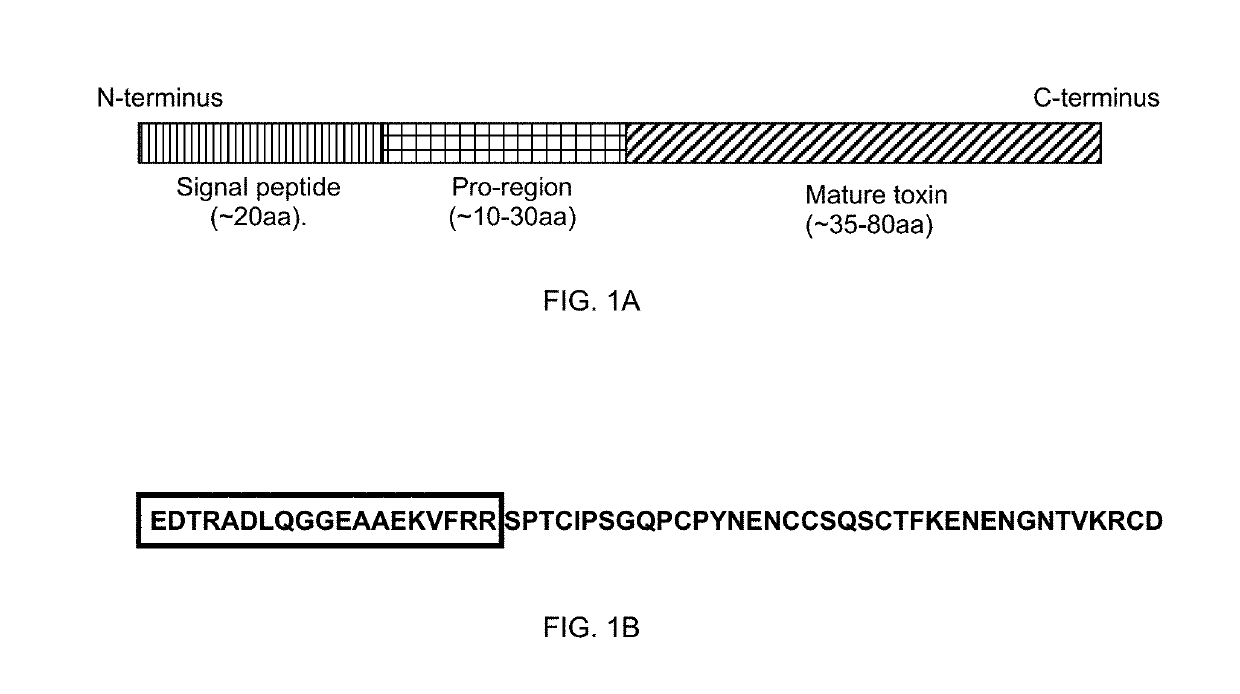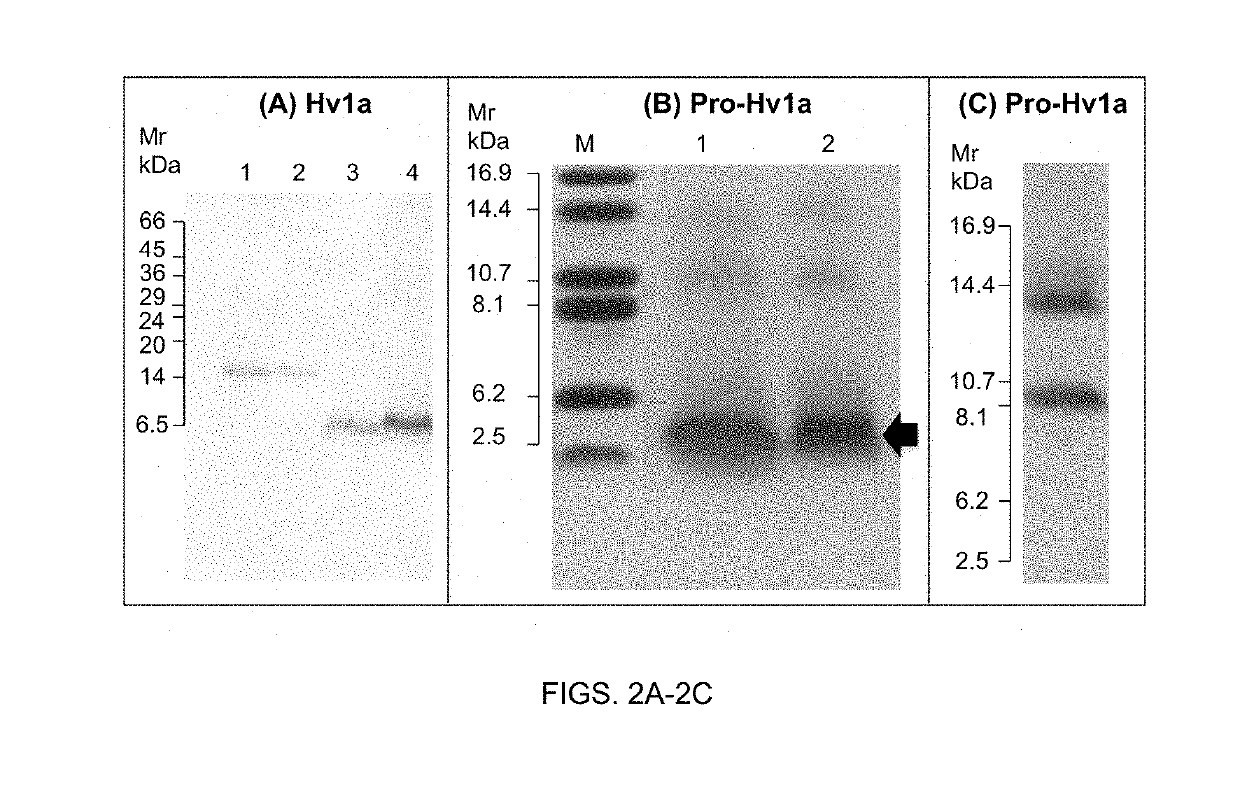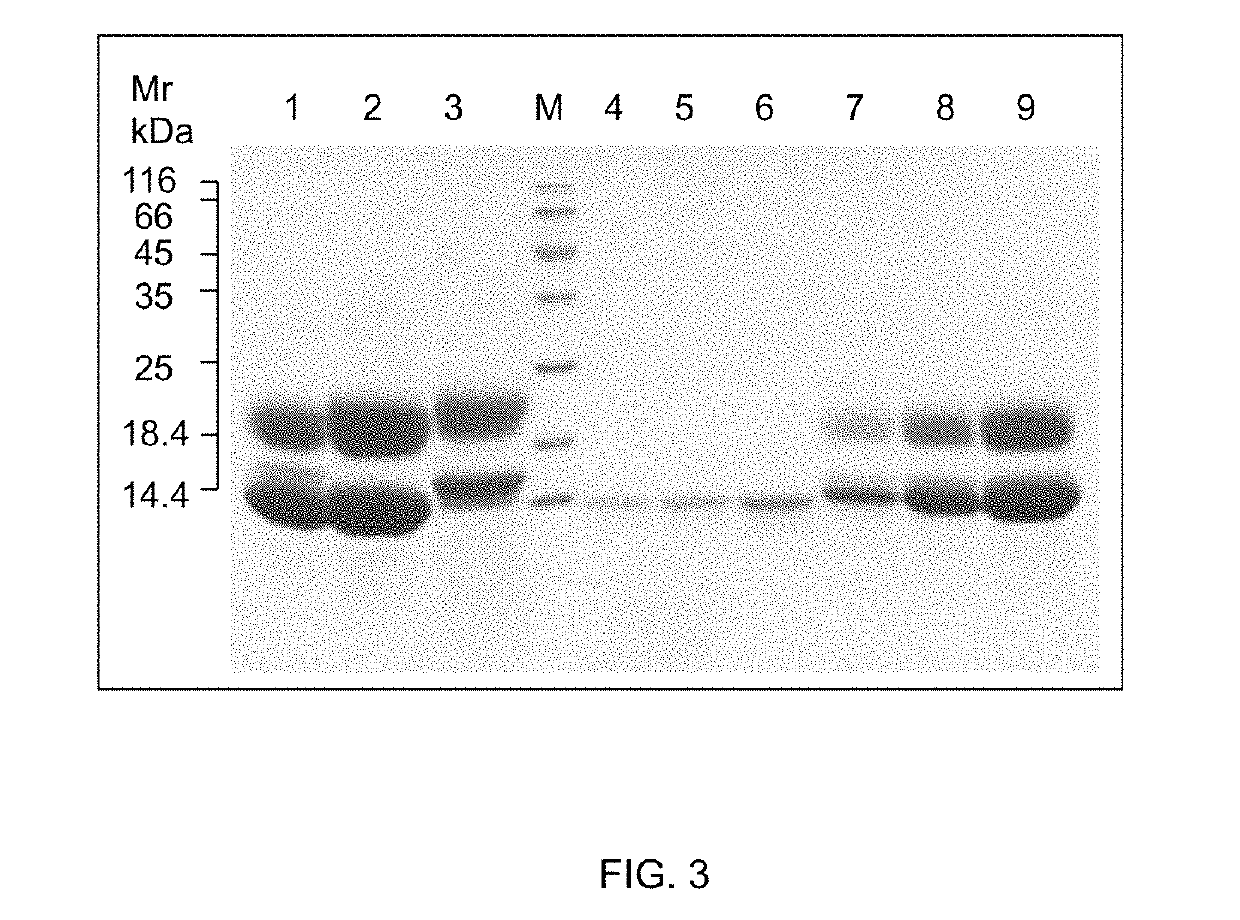Pesticidal fusion protein improvements
a technology of fusion protein and pesticidal, which is applied in the direction of biocide, peptide, peptide source, etc., can solve the problems of environmental damage, plant disease remains a major concern, and pests are still a major constraint on crop production
- Summary
- Abstract
- Description
- Claims
- Application Information
AI Technical Summary
Benefits of technology
Problems solved by technology
Method used
Image
Examples
Embodiment Construction
[0117]The present invention will now be described with reference to the following non-limiting examples and figures, which show:
[0118]FIG. 1: Schematic of gene structure of toxins containing pro-regions
[0119](A) Schematic of gene structure of toxin proteins containing pro-regions. (B) Sequence of spider toxin, Hv1a. Boxed amino acid sequence corresponds to pro-region.
[0120]FIG. 2: Expression and purification of recombinant Hv1a and pro-Hv1a toxin
[0121](A) SDS-PAGE gel (20% acrylamide) analysis showing purification of recombinant Strep-tagged Hv1a toxin from culture supernatant. Lanes 1 & 2 are GNA standards (0.5 and 0.25 μg, respectively) and lanes 3 & 4 are peak fractions (10 μl) following elution from Streptactin column with 2.5 mM desthiobiotin. (B) Tris-Tricine gel (15% acrylamide) analysis of recombinant pro-Hv1a, lanes 1 & 2 are peak fractions (10 μl) following elution from a nickel affinity column with 0.2 M imidazole. Arrow depicts major protein product predicted to be pro-H...
PUM
| Property | Measurement | Unit |
|---|---|---|
| length | aaaaa | aaaaa |
| pH | aaaaa | aaaaa |
| flow rate | aaaaa | aaaaa |
Abstract
Description
Claims
Application Information
 Login to View More
Login to View More - R&D
- Intellectual Property
- Life Sciences
- Materials
- Tech Scout
- Unparalleled Data Quality
- Higher Quality Content
- 60% Fewer Hallucinations
Browse by: Latest US Patents, China's latest patents, Technical Efficacy Thesaurus, Application Domain, Technology Topic, Popular Technical Reports.
© 2025 PatSnap. All rights reserved.Legal|Privacy policy|Modern Slavery Act Transparency Statement|Sitemap|About US| Contact US: help@patsnap.com



